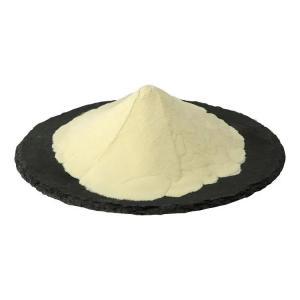Phosphatidylserine in brain health
Time:2025-02-12Phosphatidylserine influences neurochemical signaling in the brain by regulating neurotransmitter release, maintaining cell membrane function and fluidity, participating in intracellular signaling pathways, and promoting neural growth and repair. Below is a detailed analysis of these effects:
I. Regulating Neurotransmitter Release and Metabolism
Promoting Neurotransmitter Release: Phosphatidylserine enhances the release of certain neurotransmitters, such as acetylcholine, dopamine, and serotonin. Acetylcholine, for example, plays a crucial role in learning and memory. Phosphatidylserine increases calcium ion permeability in the presynaptic membrane, allowing more calcium ions to enter the neuron. This facilitates vesicle fusion with the presynaptic membrane, leading to the release of neurotransmitters into the synaptic cleft, where they bind to receptors on the postsynaptic membrane and complete the transmission of neurochemical signals.
Regulating Neurotransmitter Metabolism: Phosphatidylserine also participates in neurotransmitter metabolism. For instance, in the case of serotonin, it influences serotonin transporter function, thereby regulating serotonin concentration in the synaptic cleft. This ensures that serotonin remains at an optimal level for effective signaling while preventing excessive or insufficient neurotransmission, which could lead to dysfunction.
II. Maintaining Cell Membrane Function and Fluidity
Stabilizing Membrane Structure: As a key component of the phospholipid bilayer, phosphatidylserine interacts with other phospholipids to maintain the integrity and stability of neuronal membranes. This stable membrane structure provides an anchoring point and microenvironment for ion channels, receptors, and other signal-transmitting proteins on the neuronal surface, ensuring their proper function in receiving and transmitting neurochemical signals.
Regulating Membrane Fluidity: The composition and structural properties of phosphatidylserine's fatty acid chains influence the fluidity of cell membranes. Proper membrane fluidity is essential for neurotransmitter receptor binding, ion channel function, and intracellular signaling molecule interactions. For example, when membrane fluidity is optimal, neurotransmitter receptors can bind more efficiently to their respective neurotransmitters, leading to faster and more efficient signal transduction in the brain.
III. Participating in Intracellular Signal Transduction Pathways
Activating Second Messenger Systems: Phosphatidylserine plays a critical role in intracellular signaling pathways by activating second messenger systems. When receptors on the neuronal membrane bind to neurotransmitters, they trigger a cascade of intracellular signaling events. Phosphatidylserine can be acted upon by enzymes such as phospholipase C (PLC) to produce diacylglycerol (DAG) and inositol trisphosphate (IP3), both of which serve as second messengers. IP3 promotes the release of calcium ions from the endoplasmic reticulum, and calcium, in turn, activates calmodulin and other downstream signaling molecules, regulating neuronal excitability and gene expression, thereby influencing neurochemical signaling.
Regulating Protein Kinase Activity: Phosphatidylserine also modulates protein kinase activity, particularly protein kinase C (PKC). PKC plays a pivotal role in various signal transduction pathways by phosphorylating multiple protein substrates, thereby regulating the function of ion channels, receptors, and other signaling proteins. Phosphatidylserine binds to PKC, inducing a conformational change that activates the enzyme. This activation is essential for the proper reception, transmission, and integration of neurochemical signals in the brain.
IV. Promoting Neural Growth and Repair
Supporting Synapse Formation: Phosphatidylserine is essential for neuronal growth and synapse formation. During brain development and neural network formation, it guides axon growth and synapse establishment, increasing synaptic density and connectivity. A greater number of synapses means more communication channels between neurons, leading to broader and more precise neurochemical signal transmission, ultimately enhancing the brain’s information processing capacity.
Participating in Neural Repair: In cases of neuronal injury or pathological conditions, phosphatidylserine plays a role in neural repair. It promotes neuronal regeneration and repair, helping to restore the function of damaged neural pathways. By re-establishing normal neurochemical signaling in the repaired neural circuits, phosphatidylserine contributes to the maintenance of overall brain function.
Phosphatidylserine is a critical component in the transmission of neurochemical signals. By enhancing neurotransmitter release, stabilizing cell membranes, participating in intracellular signaling, and supporting neural growth and repair, it helps maintain efficient communication between neurons. These functions make it an essential phospholipid for optimizing brain health and cognitive function.


 CN
CN





